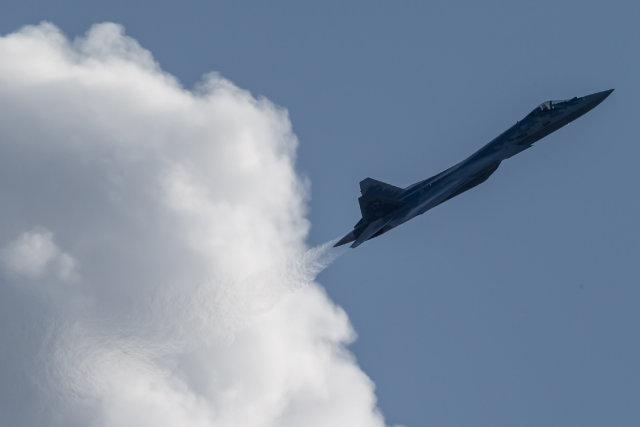In 1912, designer I.I. Sikorsky revolutionized aircraft construction by creating a four-engine aircraft "Russian Knight", and half a century later the sky was conquered by planes with eight and even ten engines. However, more engines are not always better, because everything depends on the tasks performed by aircraft.
In the domestic combat aviation of the last decades, a two-engine standard has developed, although at the beginning of the 1990s there were even more single-engine fighters in the fleet. The newest Checkmate light fighter − Russia's first fifth−generation aircraft with a single engine, developed by the Sukhoi Design Bureau - revives this tradition.
We propose to recall the bright representatives of world aviation with a different number of engines: one, two and even ten – and what trends in this direction prevailed at the dawn of its formation and now.
There are not many motors
Having started its run-up with light and compact single–engine cars, in the 1910s-1930s aviation actively experimented with the size of equipment and the number of engines. The heaviest and largest aircraft of the First World War was the German Zeppelin-Staaken R.XIV bomber built in 1917. It was lifted into the air by five 260-horsepower Maybach engines at once: four on the wings and one on the nose. Such a power plant made it possible to transport an incredible combat load at that time − more than 4 tons, 4-8 times more than that of competitors.
The Soviet giant ANT-20 Maxim Gorky, built in 1933, was intended for propaganda work. The aircraft could carry 70 passengers, was equipped with cabins, a bathroom, a buffet, a cafe, a cinema installation, etc. The ANT-20 had a take–off weight of 53 tons and a record wingspan of 63 meters for those years (approximately like a modern Il-96).
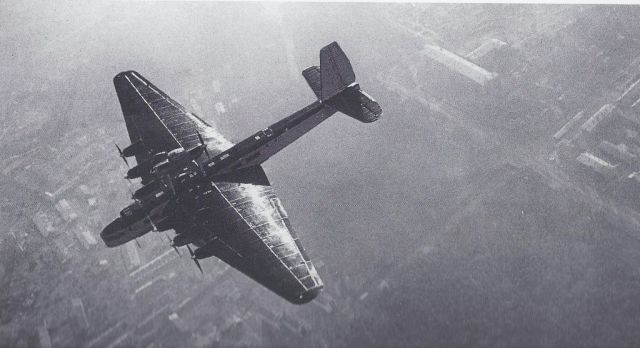
ANT-20 "Maxim Gorky"
To take off, such a colossus required as many as eight engines of 750 hp each. Six engines were built into the wings and one tandem, that is, with screws in front and behind, stood on the fuselage. But even such a number of engines did not save the winged agitator from disaster: in 1935, during a demonstration flight, an I-2 fighter rammed the Maxim Gorky wing, the plane collapsed, killing 49 people.
The most "multi-hearted" serial aircraft in history was the American Convair B-36 strategic bomber, which first took off in 1941. In the basic version, it had six pushing piston engines, later four more turbojet engines were added to them. The crews jokingly described such a controversial ten-engine scheme like this: "Two are spinning, two are burning, two are smoking, two choked, and two more have gone somewhere." At the same time, the maximum take-off weight of the super bomber reached 185.8 tons, and, based in the USA, it could easily deliver a nuclear bomb to the territory of the USSR.
Civil aviation
In the history of civil aviation, the number of engines on airplanes varied, but in general tended to decrease. The already mentioned "great-grandfather" of modern Sikorsky's "Russian Knight" airliners was four-engine, and the 1925 Tupolev record holder ANT-4 "The Land of the Soviets", comparable in parameters, already managed with two engines.
The first passenger jet in the USSR, the Tu-104, was equipped with two engines, and its peer, the long–haul Tu-114, flew on four turboprop engines. Somewhere between them, both in terms of flight range and the number of engines, there was a three-engine medium-haul Tu-154.
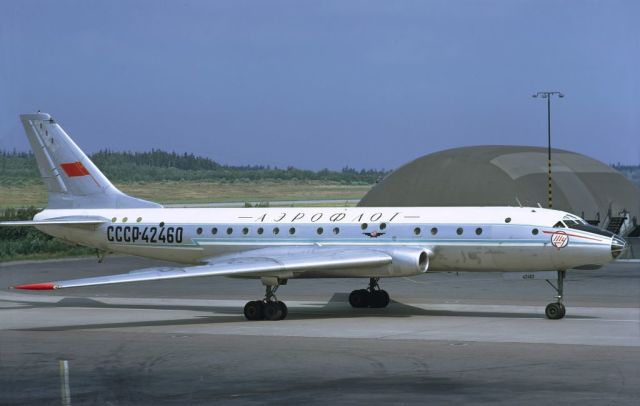
Tu-104. Photo: Lars Söderström / wikipedia.org
In general, the global trend in civil aviation was as follows: gradually, with the increase in the reliability of aircraft engines, their number from three to four was reduced to two. While the risk of failure of one engine was high, more than two engines were used. In addition, for a long time, twin-engine aircraft simply could not fly long distances, for example, to cross the ocean.
In addition to reliability, engine power has also grown over the years. If turboprop engines gave relatively little thrust and three or four were required, then jet engines were more powerful, which made it possible to reduce the number.
Modern engines are powerful and reliable, and engine failure is an extremely rare event. Engines are created in such a way that even if one engine fails, the aircraft must safely continue to take off, gain altitude and land.
Financial motivation also plays an important role in commercial aviation. Engines make up 20-25% of the cost of the aircraft. The more engines on an airplane, the higher its cost, the more maintenance and repair costs. In addition, it is obvious that four engines will "eat" more fuel than two.
Military aviation
It so happened that all fighters currently in service with the Russian army are equipped with two engines. The twin-engine scheme, which developed in the 1970s with the advent of the Su-27 and MiG-29 families, was fixed as the main one in the 1990s. At the same time, single-engine fighters, such as the Su-17, MiG-23, MiG-27, MiG-21, then prevailed over twin-engine ones.
One of the reasons for betting on two engines was that fighter aircraft developed, new equipment appeared, planes became heavier, and a new, more powerful engine was not created. In order to equip the aircraft with all modern equipment and not lose at the same time in combat load, in the realities of the 1990s, two engines were required. In addition, at that time, the Russian defense industry was largely kept afloat thanks to export orders, and foreign partners wanted twin-engine fighters.
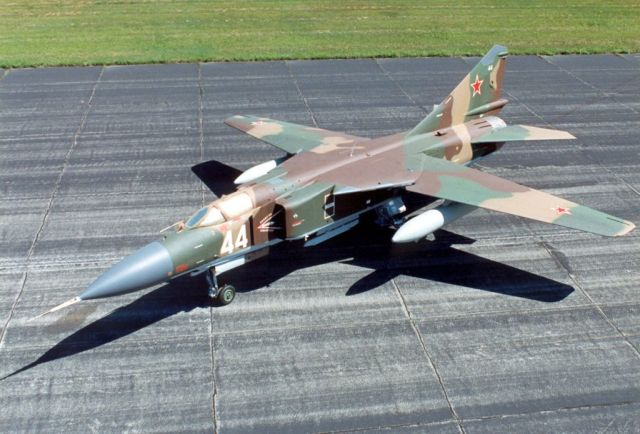
MiG-23MLD
Interestingly, the Americans have never refused a single-engine layout. In particular, the fourth-generation F-16 light fighter developed in 1974 has become one of the most popular in the world. And in 2006, for the first time, the F-35 Lightning II, a multifunctional fifth−generation fighter-bomber equipped with a single engine, took to the air. At the moment, about 1000 pieces have been released.
Russian aircraft designers from the Sukhoi Design Bureau also decided to return to the single-engine scheme, in 2021 they presented the Su-75 Checkmate light tactical aircraft. The idea of creating a single-engine aircraft arose after studying the combat operations of Russian aviation in Syria. The analysis showed that for most tasks, the capabilities of heavy twin-engine aircraft are redundant. And then, on an initiative basis, the Sukhoi Design Bureau, as part of the United Aircraft Corporation, began developing a new machine.
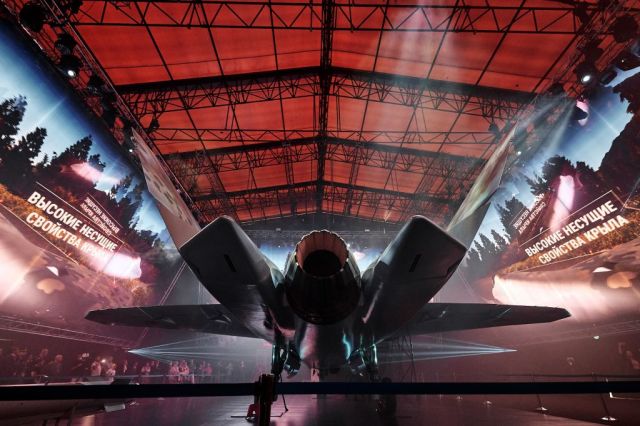
Su-75 Checkmate. Photo: Viktor Molodtsov
Checkmate will have a high degree of unification with the twin-engine "brother" Su-57. In competition with foreign analogues, the new "Su" will be profitable – two or three times - to stand out in price and surpass competitors in a number of other parameters.
Both the twin-engine and single-engine circuits have their pros and cons. In general, single-engine fighters are cheaper and more economical in terms of maintenance and operation. They are smaller in size. It is especially practical to use them for pilot training and in cases when you need to fly often. Single-engine fighters also have their advantages in a combat situation.
